In 1810, Jonathan Hale arrived in Bath Township as the first legal settler on the Western Reserve. Like many settlers, he came to build a new life farming in the Cuyahoga Valley. In 1827, he and his sons built one of the valley’s treasured landmarks: a red brick house three stories high. The home served three generations of Hales and today, over a hundred years later, the “Old Brick” still stands.
Today, we thanked Jonathan’s great-granddaughter, Clara Belle Ritchie for restoring the farm and village in the 1930s. When she died, she passed the Hale Farm to the Western Reserve Historical Society in 1956. As specified in her will, the Historical Society faithfully maintains the farm as a living-history outdoor museum that Hitch and I visited one fine summer day.
The Gatehouse Visitor Center
When we arrived at Hale Farm & Village, we found a surprisingly modern building. Upon paying the $10 per adult admission fee, we immediately learned that the Society designed it with a specific purpose. The Gatehouse serves as a “gateway” to the past for us modern people to “step through” and “learn” about the Ohio settler era. Opened in 1991, the building supplied us with all kinds of information through exhibits and artifacts. We learned many interesting details on how the farm and village came to be before heading out to explore.
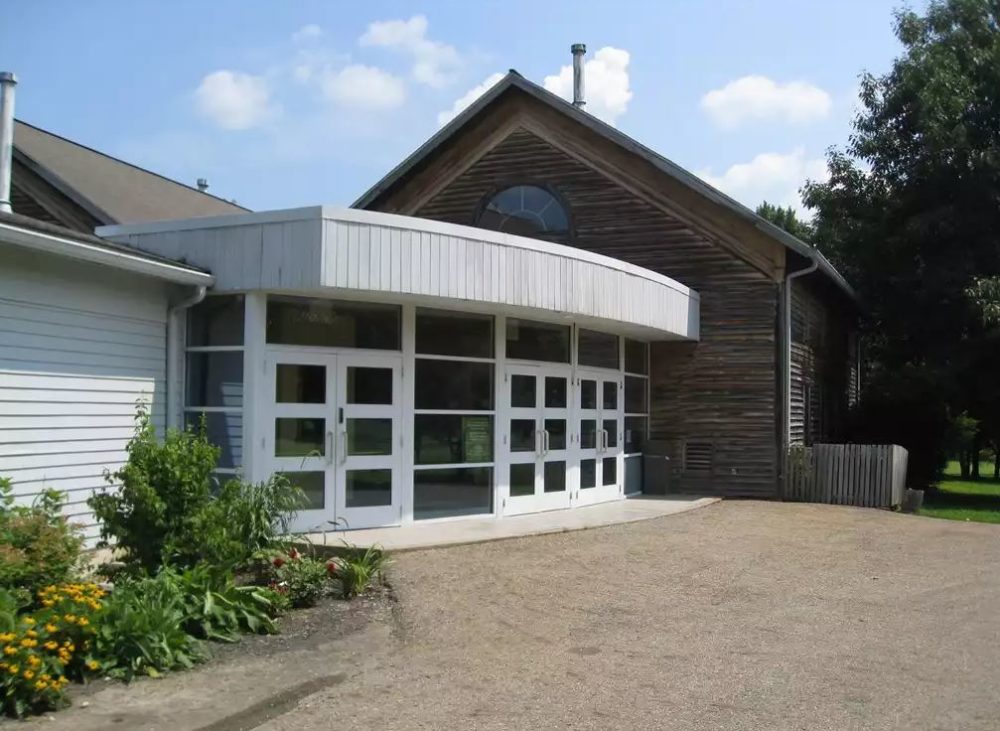
Gatehouse – cafe, gift shop, exhibits and gateway to the Hale Farm and Village
John A. McAlonan Carriage Manufactory
The Historical Society keeps a collection of 19th-century horse-drawn carriages in a red 1851 barn-like building. There are nine carriages in total, varying in size, the number of wheels, and the number of horses required. I enjoyed reading about one unassuming carriage with a convertible top only because it was once owned by President Garfield’s late wife, Lucretia Rudolph Garfield. The former First Lady used the carrage to return to her her former residence in Ohio after her husband died. I later learned that during special events, they bring out a carriage or two with horses and treat visitors to fancy carriage rides.
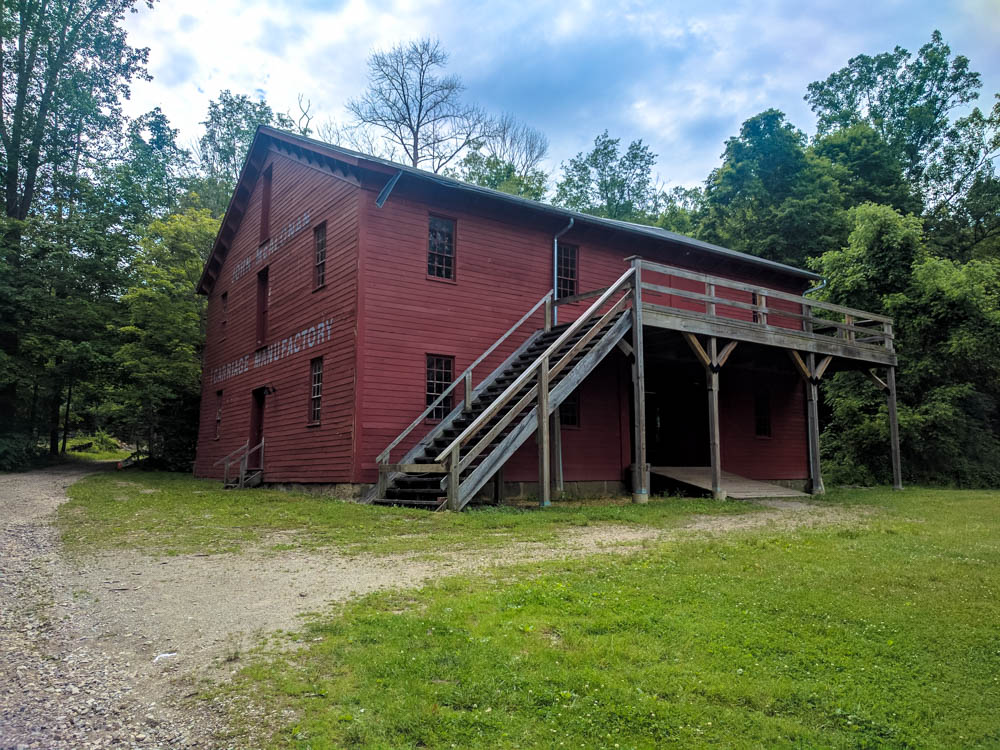
Carriage Manufactury
Jonathan Fritch Log House
When we crossed a small brook and entered this small building, we found a volunteer in 1800s period garb tending the fireplace. We observed evidence of cooking, laundry, and wool carding. Much like the living-history locations at the Lincon memorials, we learned how the settlers built such structures, and then discussed the daily life of a 1800s settler. As we step out to view other parts of the farm, we found another volunteer weeding in a small row garden. After a few lines of conversation, I learned that marigolds lined around the plot prevent disease and pests for other plants in the garden, while the flower heads can be made into a yellow dye color for yarn works.
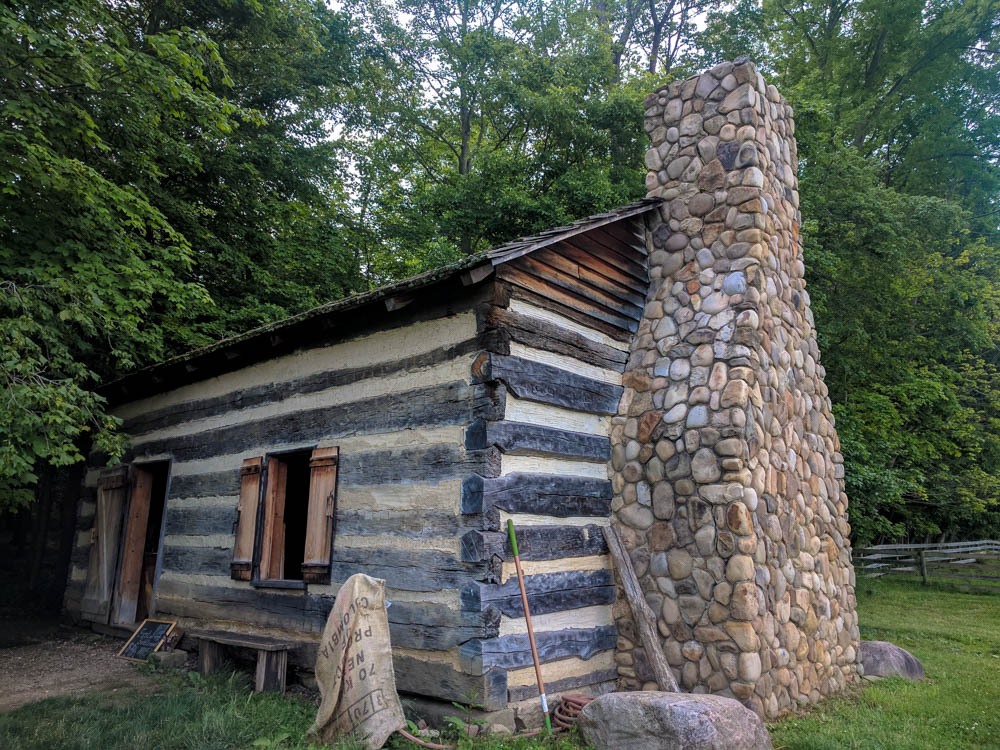
Log Cabin
Old Brick
Past cow and sheep pastures, we took a dirt path to the three-story red-brick Hale House. When we wandered inside, I expected something from the early 19th century, but then I remembered that three generations of Hales lived here, and upgraded the house as needed. The house had been modernized to such an extent that the Historical Society couldn’t possibly return it to its original state. Instead, we stood within an interpretive space, with different rooms telling us the Hale family’s story throughout the generations. Meanwhile, in the downstairs rooms, we observed yarn spinning, dying techniques, and basket weaving.
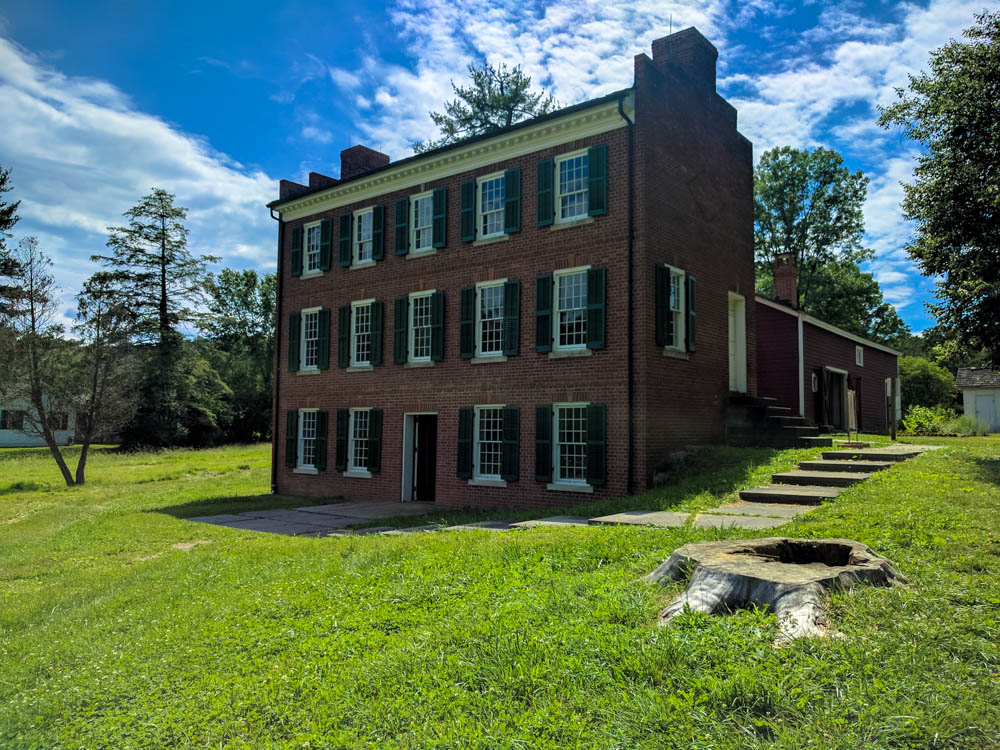
Hale House
Wheatfield Village
On the other side of Oak Hill Road, we encounter a modest village of about eight buildings. According to the Gatehouse exhibits, the Wheatfield Village never really existed. Although the historic buildings are original 19th-century structures built within Ohio’s Western Reserve, they were acquired and moved to the site as part of a “historic preservation through relocation” program. Each house belongs to a made-up family “living” within, and as we explored we found a family member ready to explain village life in the 1800s.
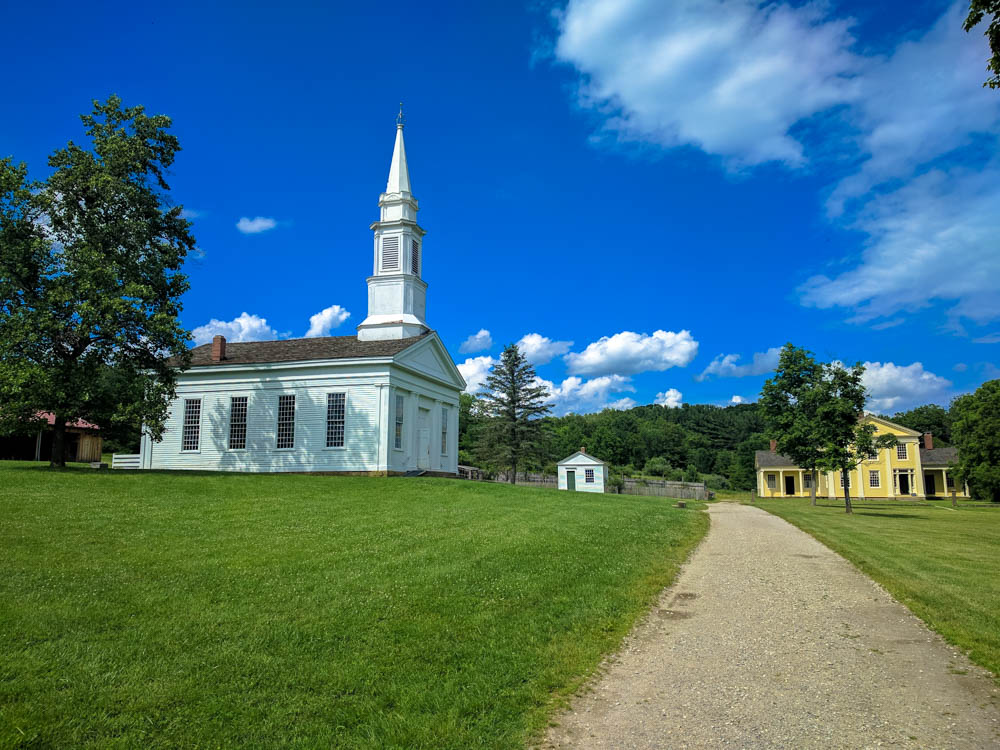
Wheatfield Village – a fictional village created by the Western Reserve Historical Society
Saltbox House
A saltbox home takes its name from the resemblance to a wooden lidded box in which salt was once kept. Such a house is identified by its asymmetrically long, rear roof line. This particular home was built 1830 in nearby Richfield, Ohio and moved to Hale Farm in 1962. Inside we spoke with a young lady of the “Mueller Family,” eager to teach us all about weaving and herb drying. Outside I take simple delight in the diverse collection of herbs growing in their small garden.
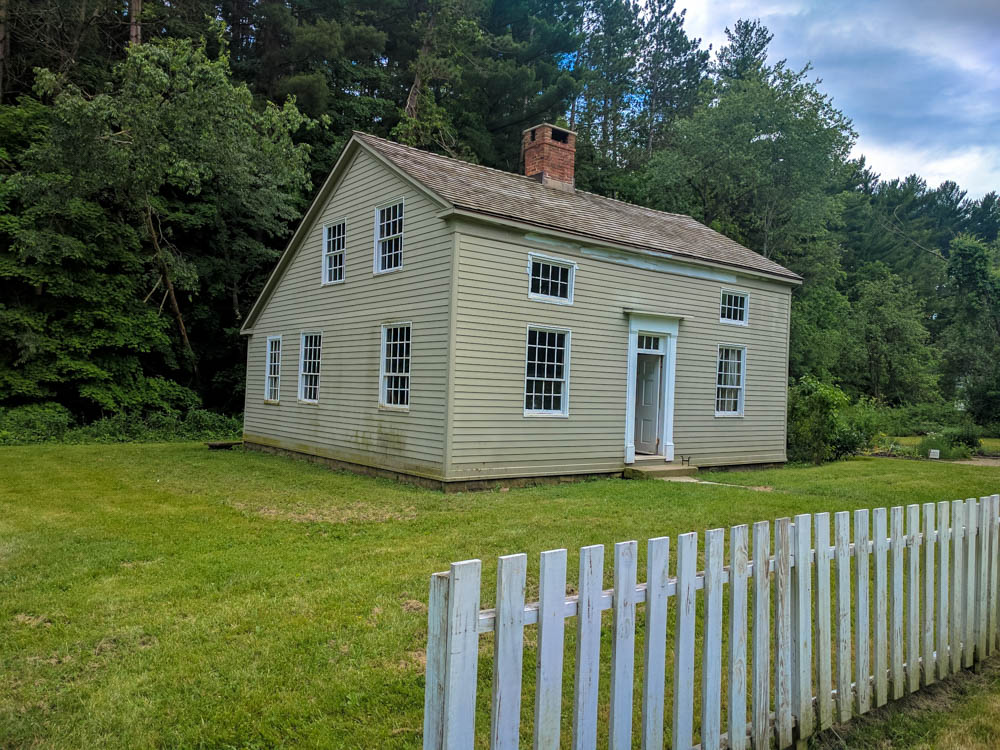
Saltbox House
Jagger House
In 1845, the prosperous carriage-maker Clement Jagger decided to build a Greek Revival-style home. Like the Saltbox House, the HIstorical Society moved the Jagger House to its current location in 1962. As we cross the threshold, we are greeted by a gentleman named “Dr. William Tibbals” who uses the building as a home for his family and office for clients. We discussed some common cures for headaches and the like, then the doctor showed us his frightening collection of 19th-century medical implements and medicinal leeches.
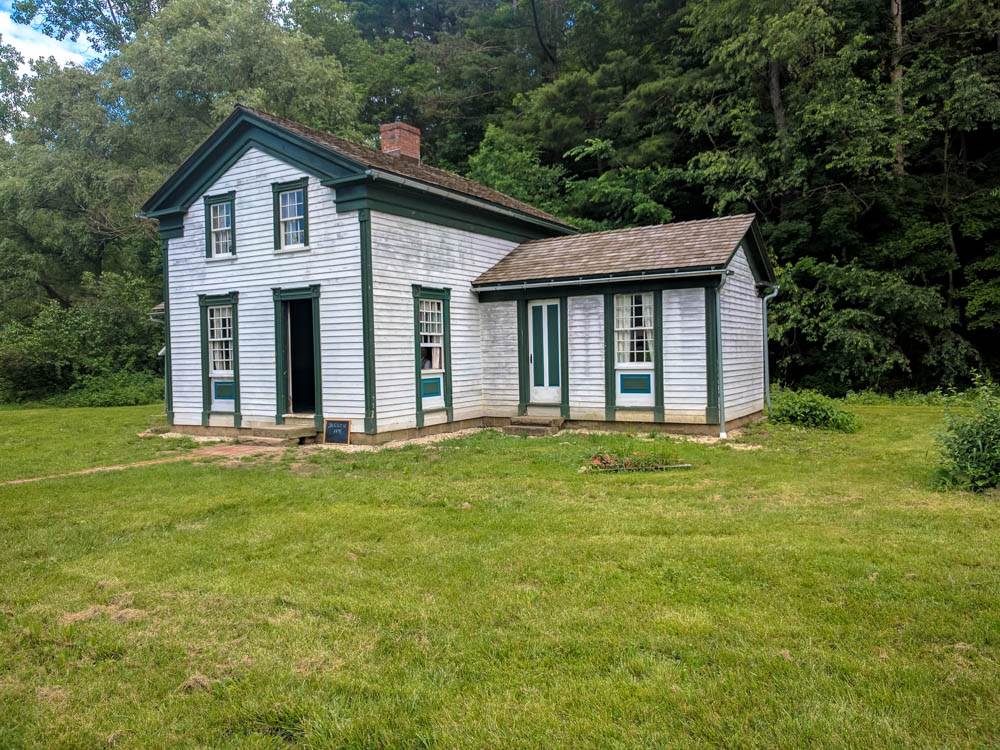
Jagger House
Herrick House
Jonathan Herrick built his stone Greek Revival home in 1845, and the Historical Society moved it from Twinsburg, Ohio, to its current location in 1974. The “Meredith Family” ladies within taught us about dairy farming, cheese making, and butter churning.
Goldsmith House
Named after the architect, Jonathan Goldsmith, the Goldsmith House was built in 1831 in Willoughby, Ohio, for William Peck Robinson. In 1985, the Historical Society restored and reopened the house as the home of the wealthy “Widow Hadley” and her family. Inside we found “Mrs. Hadley” in a pretty hoop-dress reading a book. She kindly showed us around her home, impressing us with her richly furnished home, fine china, and lovely pianoforte.
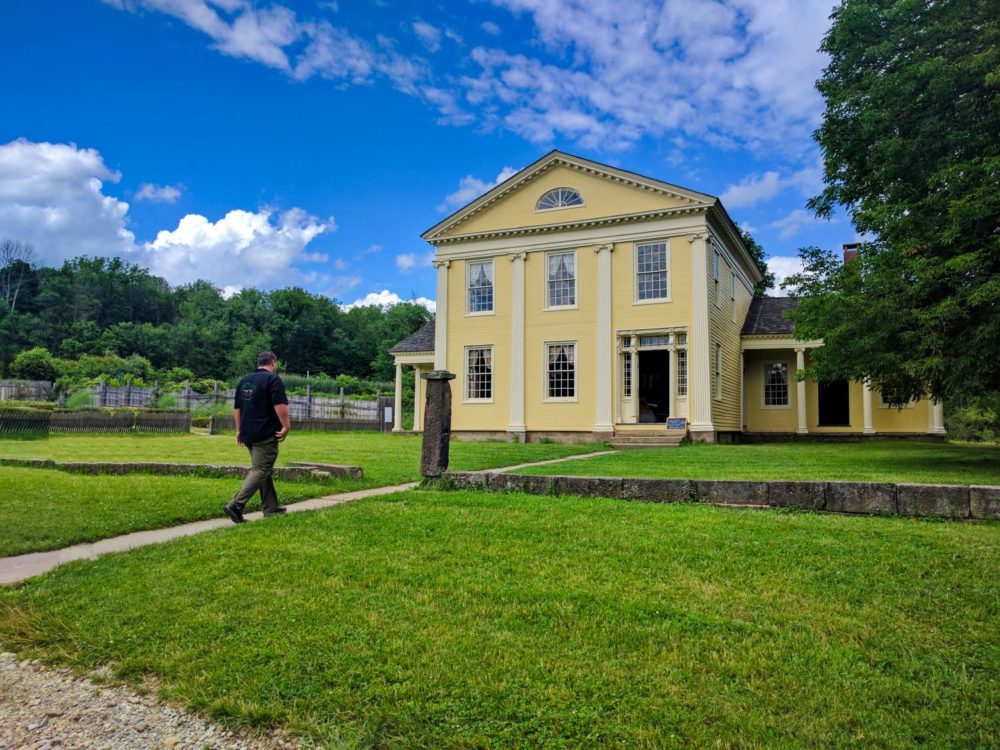
Goldsmith House
Meeting House
Formerly a Baptist Meeting House from Streetsboro, Ohio, the Historical Society saved this old 1852 Greek Revival structure and moved it to the village in 1970. Today it serves as a meeting house for the township and for religious ceremonies. Inside we admired a well-kept organ and lengthily pondered at a curious shallow pit set into the altar until one of the Meredith ladies came in and told us it was a baptismal font.
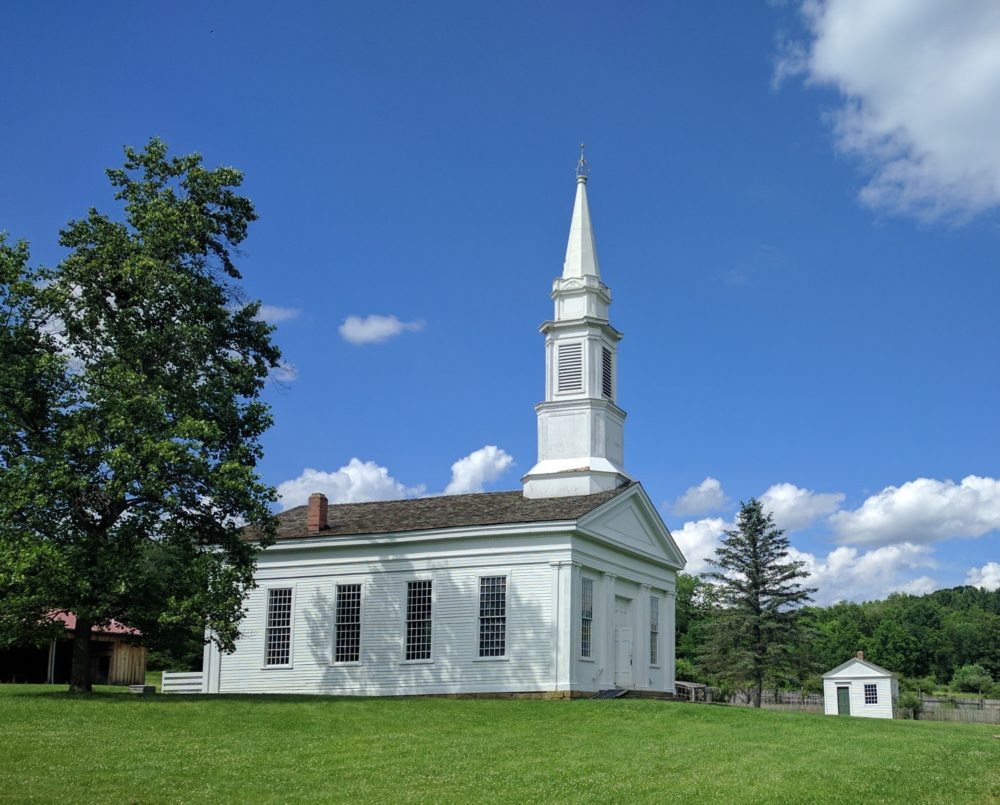
Meeting House
19th Century Crafts
Having finished our tour of the Village, we walked back across the road to where the tradesmen worked. We discovered a blacksmith, a besom maker (broom maker) and candle maker. They also had pottery and glassblowing, but both those workshops were closed. Each volunteer was eager to teach and show off their trade. Overall, I wholly recommend visiting Hale Farm and Village for at least an afternoon.
- Log Cabin & Garden
- Saltbox House Looms
- Broom Maker
- Candle Maker
- Blacksmith
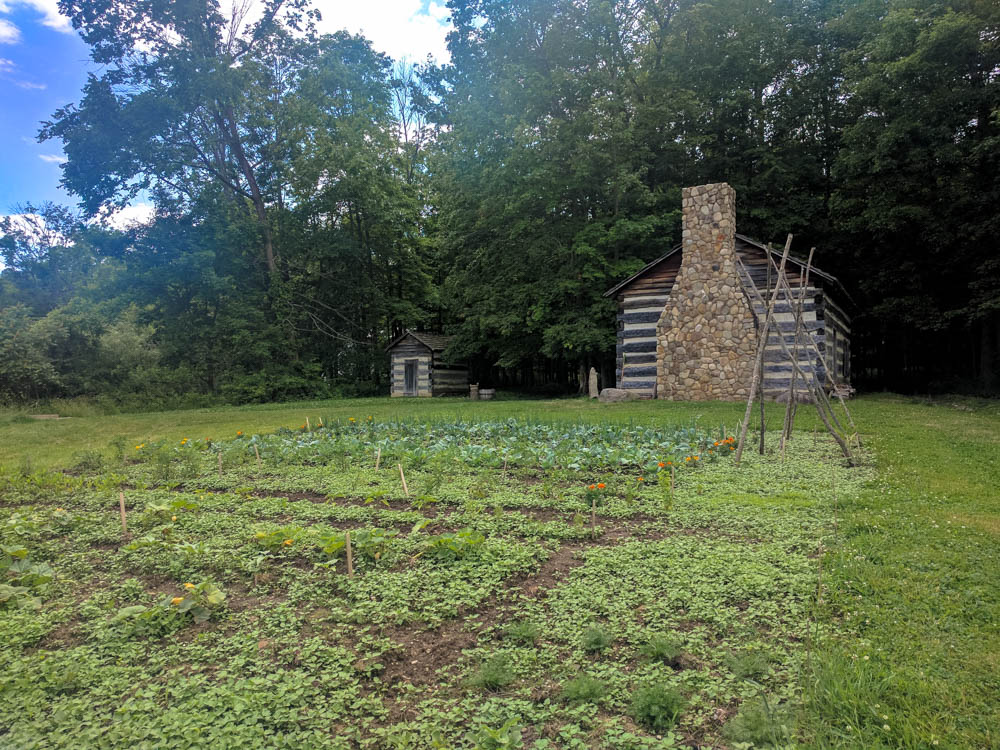
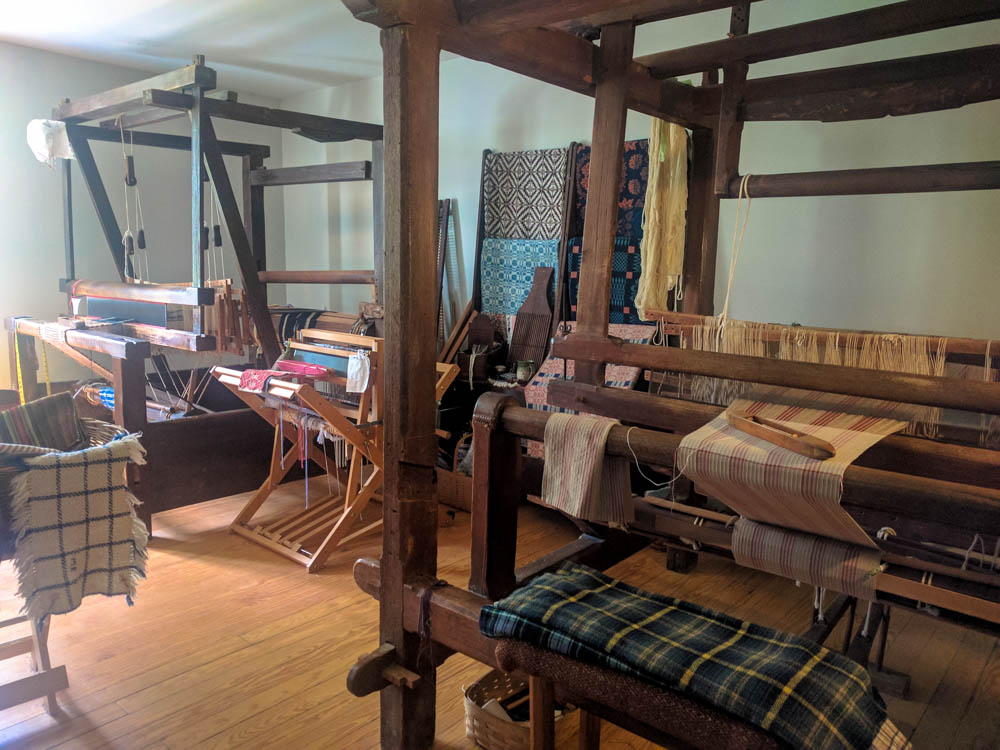
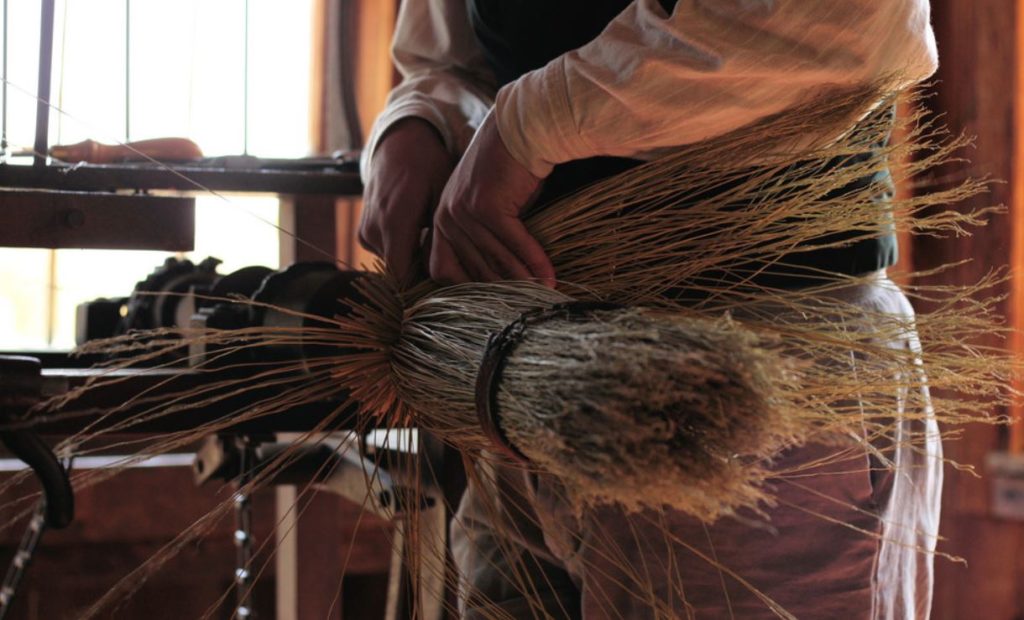
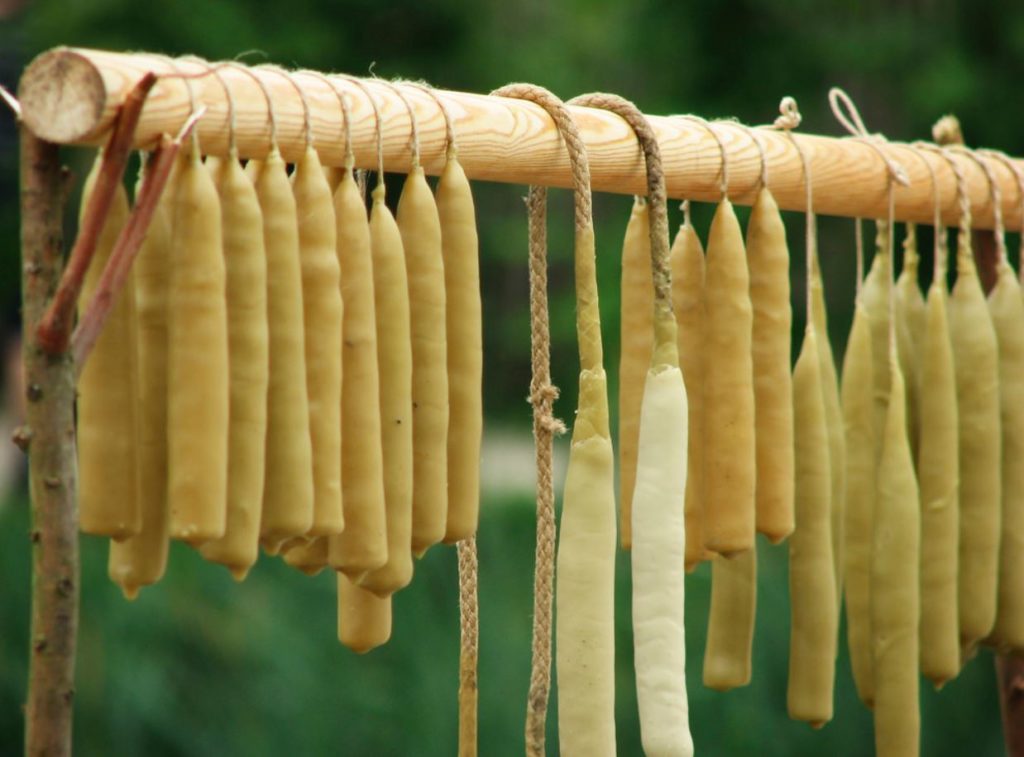
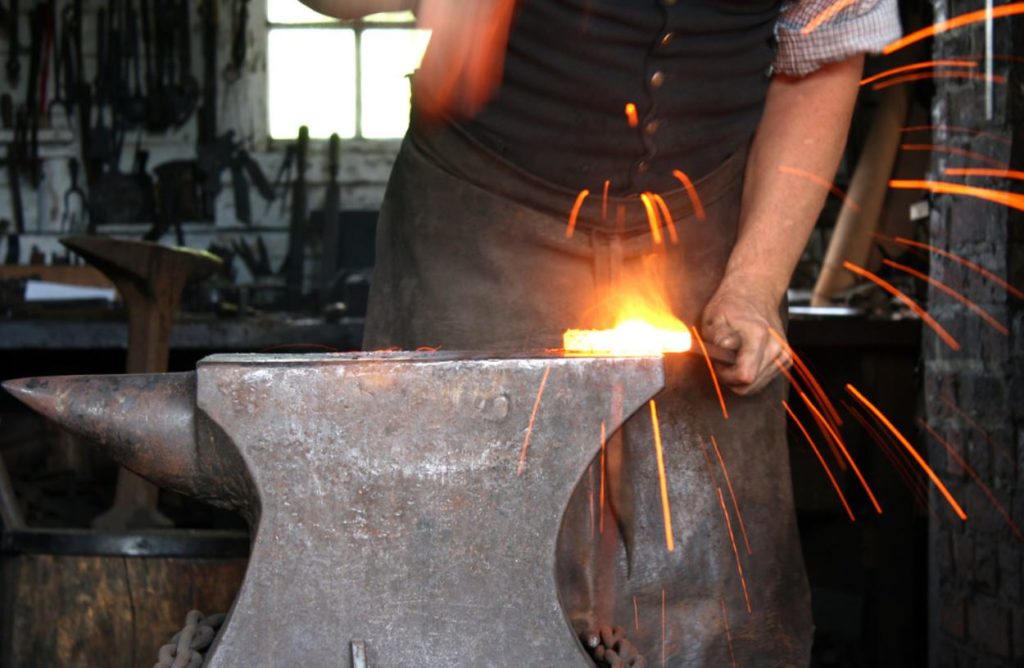
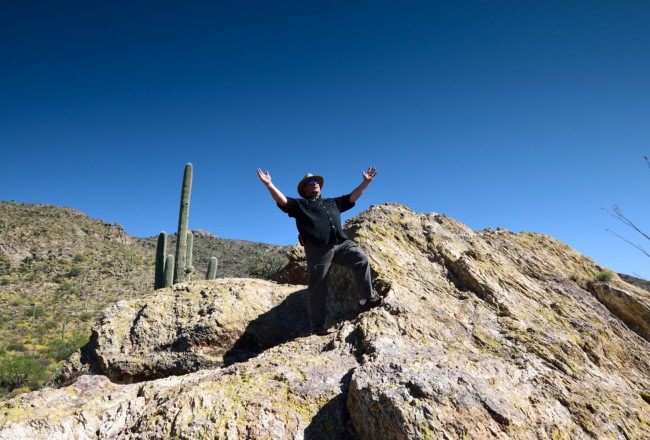
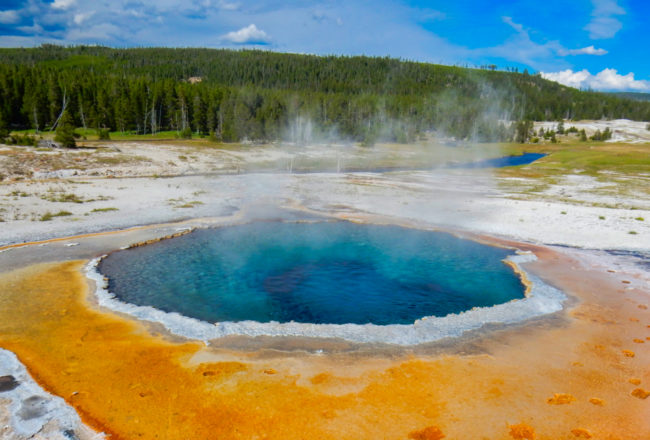
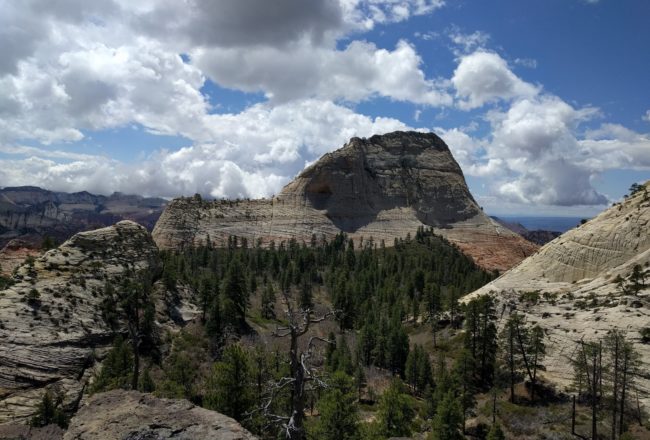


4 Comments
I live 30 minutes from this place, but have never been there! I need to check it out- thank you for the inspiration!!
You’re welcome! They also have seasonal events and classes for adults and kids. One volunteer told me that their Christmas Market on the Farm event is pretty fun, especially if you’re looking for hand-crafted gifts.
I was fascinated by historical interpreters and actors as a kid and I still am today. It’s so very neat to have them assist us in stepping back in time and creating a more full image of what life would have been like.
Back in our younger days, my husband and I use to volunteer at renaissance fair events. It’s always fun to step back in time be it as a guest or customer.